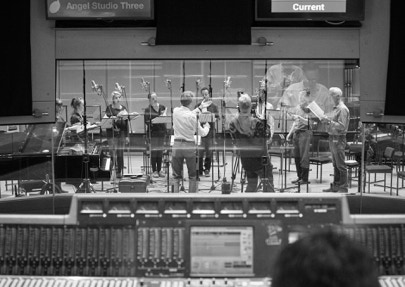Mona Lisa
WITH
Claudio Monteverdi – Era l’anima mia (1605)
THE IMAGE
This most famed of paintings started out in 1503 as the portrait of a bourgeois Florentine woman, Lisa Gheradini, wife of the silk merchant and sharp operator, Francesco del Giocondo. Over the long period of its gestation it evolved into a ‘universal picture’ into which Leonardo poured his knowledge as a painter. It became a demonstration of the relationship of the body of the woman and the ‘body of the earth’ (with its ‘vene d’acqua’, ‘veins of water’), both living and changeable. It expresses his optical researches into light, shade and colour, and into the progressive blurring of forms. It manifests his concept of the eye as ‘window of the soul’, which allows us to take in the glories of the visible world, and transmits the sitter’s ‘concetto dell’anima’ (the ‘intention of the soul’) to the viewer.
For a woman to look at the spectator is unusual in portraiture at this time, and to smile is even more radical. The motifs of the beguiling eyes and bewitching lips of the beloved lady consciously emulate the love poetry of Dante, Petrarch and their successors (including Guarini). The divine lady’s eyes and sweet smile inflame our desperate love but she remains eternally beyond the reach of our earthly desires.
MARTIN KEMP
———————————————————————————————————————
THE MUSIC
Leonardo’s daring in the Mona Lisa is reflected in the visceral emotion of some of Monteverdi’s later a capella madrigals. While other composers puffed and panted in their modernity and increasingly gestural writing (music lagged behind painting in taking risks) Monteverdi embodied emotion through his combination of naturalistic delivery of the text, twisting harmonies to paint the subject’s emotional state, and an unparalleled acoustic awareness of how to lay out the notes to speak with maximum aural effect.
ROBERT HOLLINGWORTH
Mona Lisa
Leonardo da Vinci
CLICK TO ENLARGE
Digitally restored version of the Mona Lisa by Pascal Cotte in Paris, using very high resolution multi-spectral scans to provide data on the varnish, surface discolouring, and the pigments used by Leonardo. Algorithms are then applied to restore the colours of the painting in a way that is close as possible to the original effect.
CLICK TO ENLARGE
CLICK TO ENLARGE
Mona Lisa / Leonardo da Vinci
Digitally restored version by Pascal Cotte
© Sipa/Shutterstock

TEXT / TRANSLATION
Era l'anima mia
già presso a l'ultim'hore
e languia come langue alma che more;
quando anima più bella e più gradita
volse lo sguardo in sì pietoso giro,
che mi mantenne in vita.
Parean dir quei bei lumi,
"Deh, perché ti consumi?
Non m’è sì caro il cor, ond'io respiro,
come se’ tu, cor mio;
se mori, ohimè, non mori tu, mor’io."
My soul was
already close to its last hour
and languished like a dying soul languishes;
when a soul more fair and more ravishing
turned to me a look so pitiful,
that it kept me alive.
And those lovely lights seemed to say
“Ah, why are you consumed so?
This heart that makes me live is not so dear to me,
as you yourself, my heart;
If you die, alas, it is not you that die, but I.”
Giovanni Battista Guarini (1538 - 1612) from Rime, 65

I Fagiolini
Credit Matthew Brodie
I FAGIOLINI
Anna Crookes - soprano
Eleanor Minney - mezzo-soprano
Clare Wilkinson - mezzo-soprano
Matthew Long - tenor
Greg Skidmore - baritone
Charles Gibbs - bass